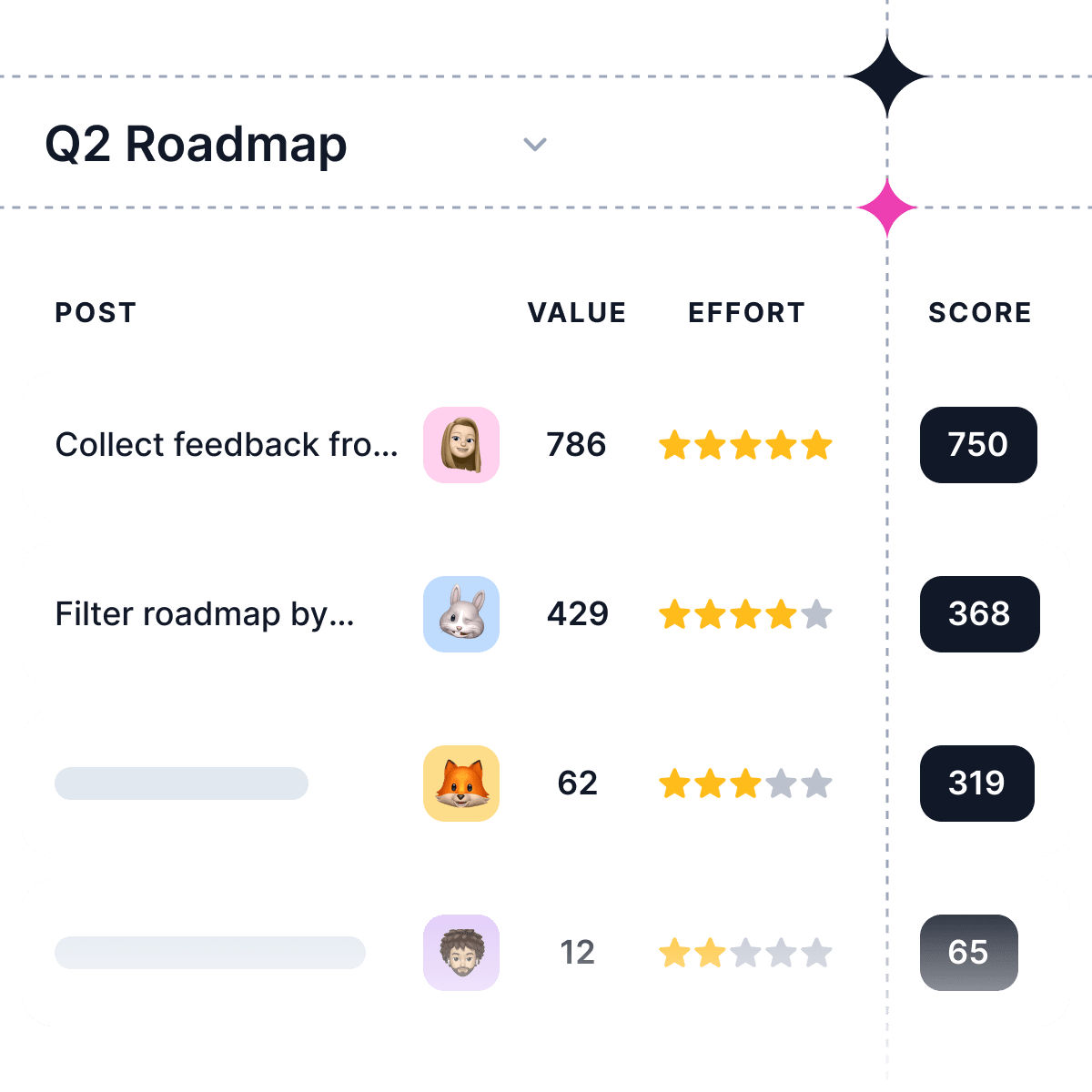Creating and maintaining a product roadmap for your team is hard work. You struggle with prioritizing what to include and how to manage feedback from others.
Your job is stressful enough.
In this article, we'll point you toward what works and what doesn't when creating a product roadmap. Then we'll tell you how to set up easy-to-use templates that will help keep you organized and deliver something sustainable for your team to follow.
A product roadmap is a document that presents a plan for your product over the next few months. It should include the features and enhancements you want to develop, as well as the dates they're expected to be completed.
These days, it's hard to find a product manager who doesn't use a product roadmap. But just because you're using one doesn't mean you're doing it right.
SaaS products are complex, both the internal team and external users need to know what you're planning to do with the product. The more transparent you are about your plans, the easier it will be for everyone involved to feel confident about their investment in the product.
If you don't have a public product roadmap, then you're missing out on a lot of benefits. Here are some reasons why SaaS products need public product roadmaps:
-
It helps you prioritize the most important features to build next
-
It shows your customers what to expect from the product and when they can expect it
-
It makes your product more transparent.
-
It shows customers what they can expect from you in the future.
-
It helps build trust with your customers and team members.
Here are some of the do's and don'ts of creating your product roadmap:
Do: Make sure everyone knows how to read it
If different teams are working on different parts of your product roadmap at once (e.g., marketing and engineering), everyone must understand what each section means and how it fits together for them to work well together throughout the process. This might mean having conversations about how things should be
Don't: Release too many versions at once.
It's tempting to keep adding features and upgrades to your product roadmap as they come up but don't do it! Instead, focus on releasing one version at a time and making sure it's as polished as possible before moving on to the next one.
Do: Use customer feedback to guide your roadmap decisions
Make sure that you're collecting feedback from customers and other stakeholders throughout the development process. Use this information to inform your roadmap decisions, but also be open to changing course if you find out something important later on.
Don't: Forget about the timeline!
Users will want to know exactly how much time it takes for new features to get released in each stage of development, along with any other relevant metrics like pricing structures or app store availability dates.
Do: Use a visual tool to help you create your product roadmap with ease.
Tools like Supahub can help you create high-quality roadmaps in minutes. It will also allow you to organize your plans by stage, feature, and more. If you're looking for something a little different, consider using a dedicated project management tool like Asana or Jira to manage your product roadmap as well.
Don't: Use vague terms
Don't use vague terms like "improving the user experience" or "increasing retention". These are too broad to be effective. Instead, focus on specific goals you want to achieve. For example, if you want to increase retention, define what that means for your product and the user experience. Is it about getting users to come back the next day? Is it about increasing user engagement over time?
Do: Focus on core features and how they will be used by customers
A successful product launch requires a clear understanding of your target audience and how they will use the product in their lives. This will help you to focus on the most important features and ensure that your product is as useful as possible for its intended users.
Don't: Assume the way people will use your product, ask them!
When you're building a product, it can be easy to get caught up in your own head and assume that people will use the product in the same way that you would. However, the best way to make sure your product is successful is to talk with actual users about how they might use it.
Do: Use stories as a part of your development process
Stories are a great way to convey why your product is valuable, and how it will be used by its users. They can help you think through the most important features of your product, as well as highlight ways that people might use them differently than you had anticipated.
Don't: Forget about stakeholders who aren't on your team.
Your product roadmap is not just for internal use it's also going to be shared with customers, investors, partners, and other stakeholders. And that means that even though they don't get their hands dirty building the product itself (or maybe even understand how it works), they'll still want access to information about what's coming down the pipeline and why it matters. Make sure you take time to include them in this process by sharing early versions of roadmaps with them and asking for feedback along the way.
Do: Set goals for each feature on your roadmap
For each phase of the product's life cycle, make sure those goals are SMART (Specific, Measurable, Achievable, Relevant, and Timely). This will help you stay focused and ensure that you're building the right thing. For example, if one of your goals is to increase customer engagement, then this should influence which features you decide to prioritize.
Don't: Over plan your roadmap
You need to be flexible enough to change course if you need to. Don't spend too much time on your roadmap, especially if you don't have a lot of experience with the process. A good product manager will always be open to adjusting their plans based on what they learn from customers and other stakeholders.
Do: Make sure your roadmap is actionable.
A roadmap that only contains vague descriptions of features and timelines will be hard to work with and difficult to make decisions about. Instead, use the roadmap as a tool to help you set milestones and measurements for each feature.
Don't: Create an overly complicated roadmap
If your roadmap is too complex, it will become hard for stakeholders to understand. This can make it difficult for them to be involved in the process and could lead to things getting derailed. Instead, create a roadmap that focuses on outlining key decisions and milestones, rather than detailing every single feature that needs to be built.
Conclusion
In general, the product roadmap is part of most strength areas of a company's business. That is why it is one of the most important components of a company’s long-term growth strategy and implementation process.
The failure to properly design roadmaps shifts the focus to tactical tasks like project management and execution rather than strategic, long-term goals. To be successful, a great product roadmap should always be accessible to all companies involved in the product development life cycle, while still remaining flexible enough to change over time. Most importantly, all stakeholders should be able to clearly see how their efforts contribute toward achieving your company's overarching business objectives.






